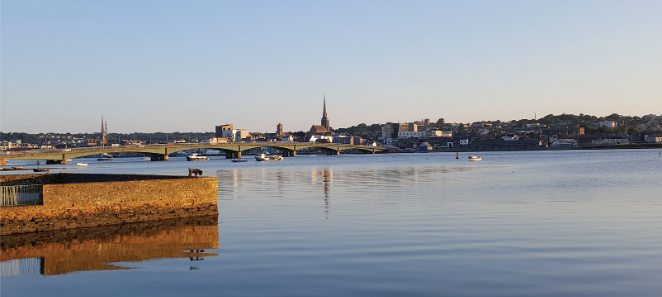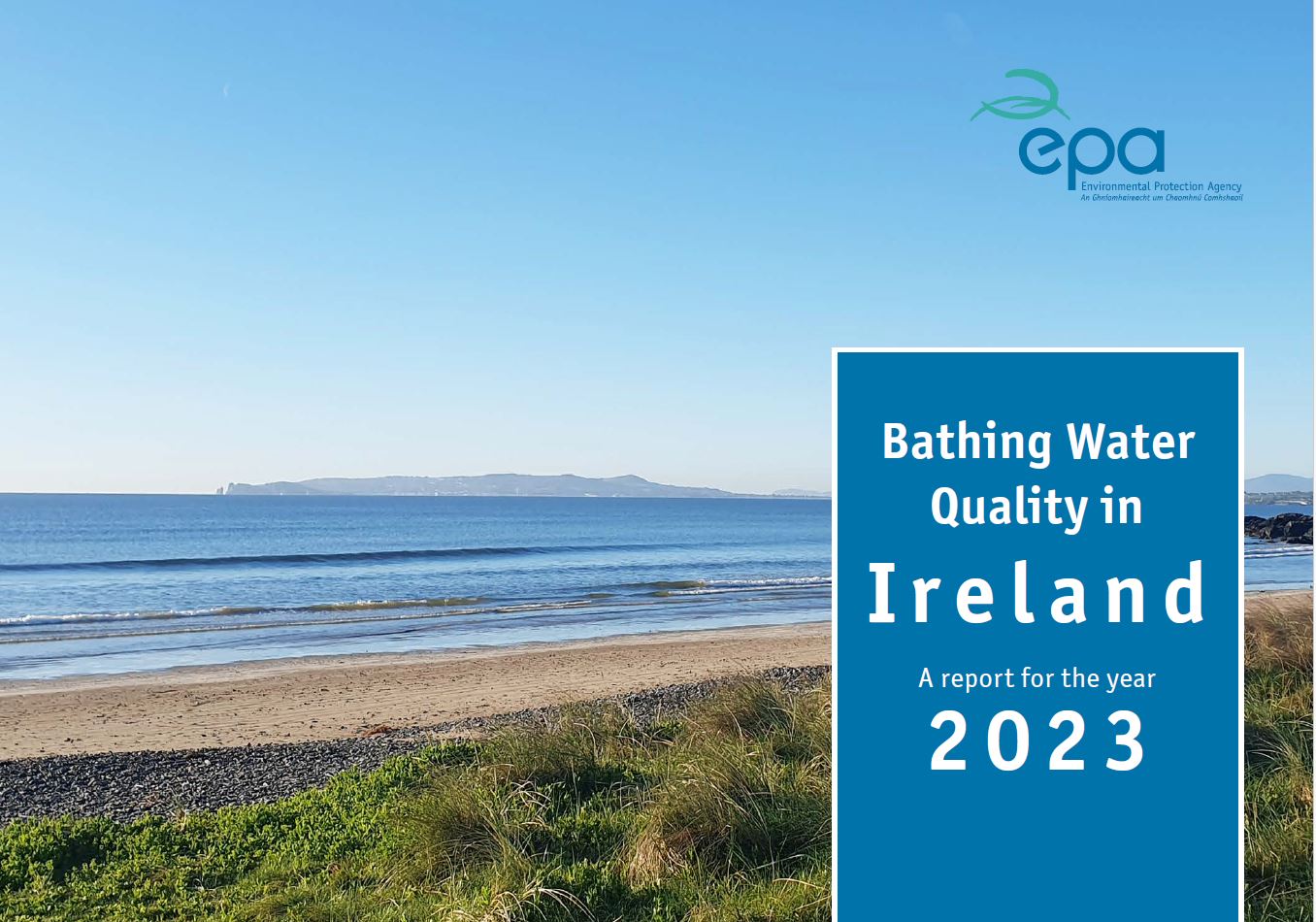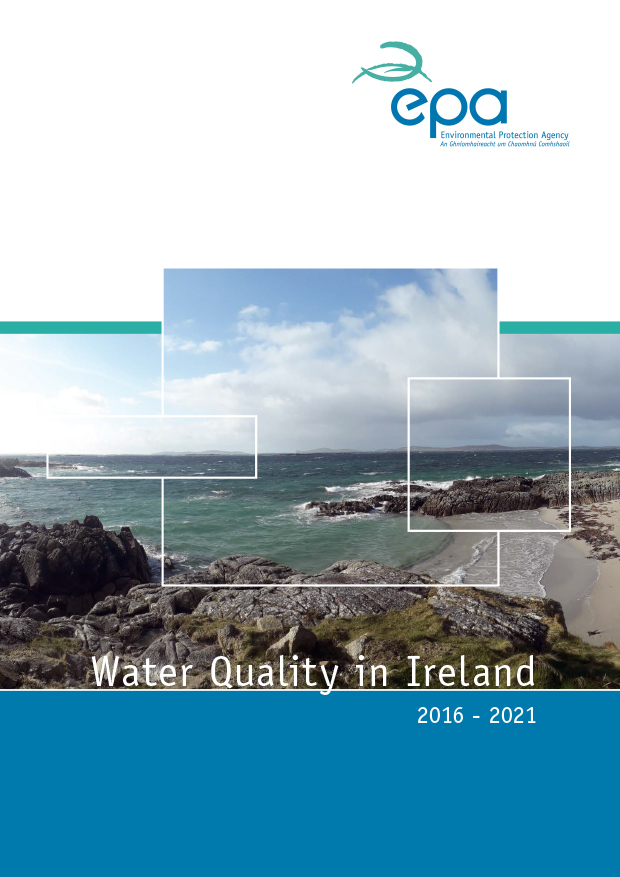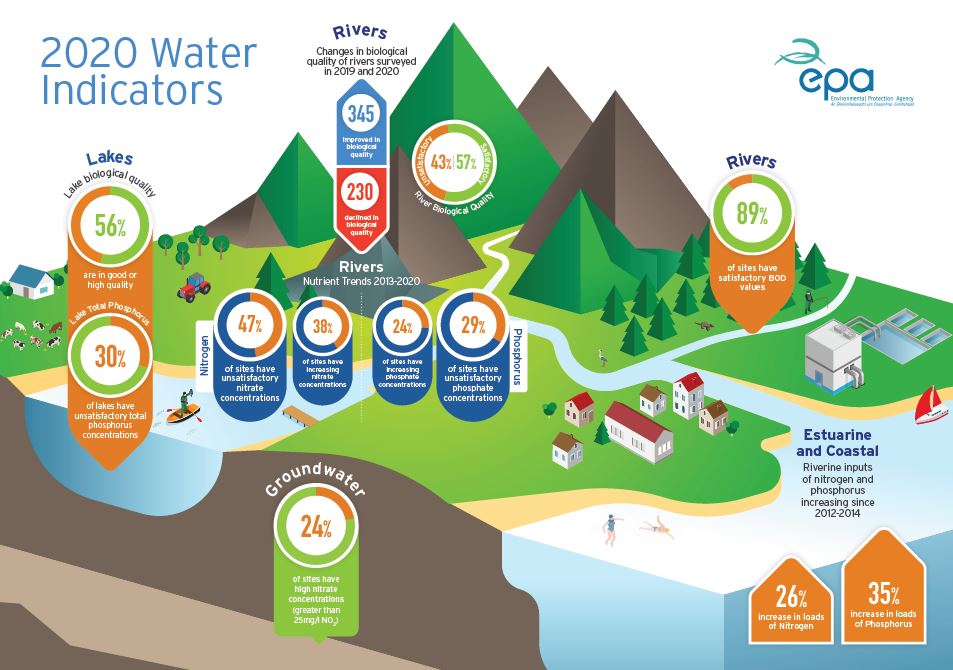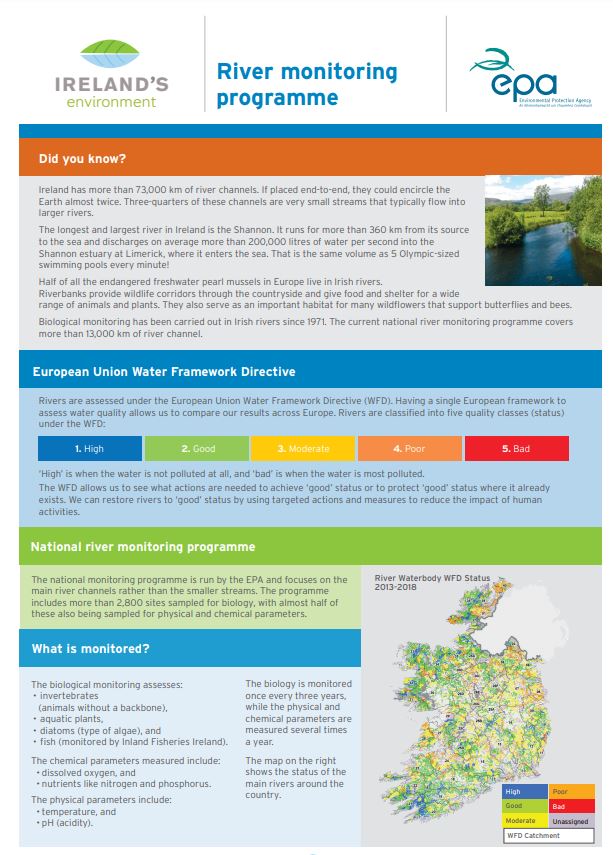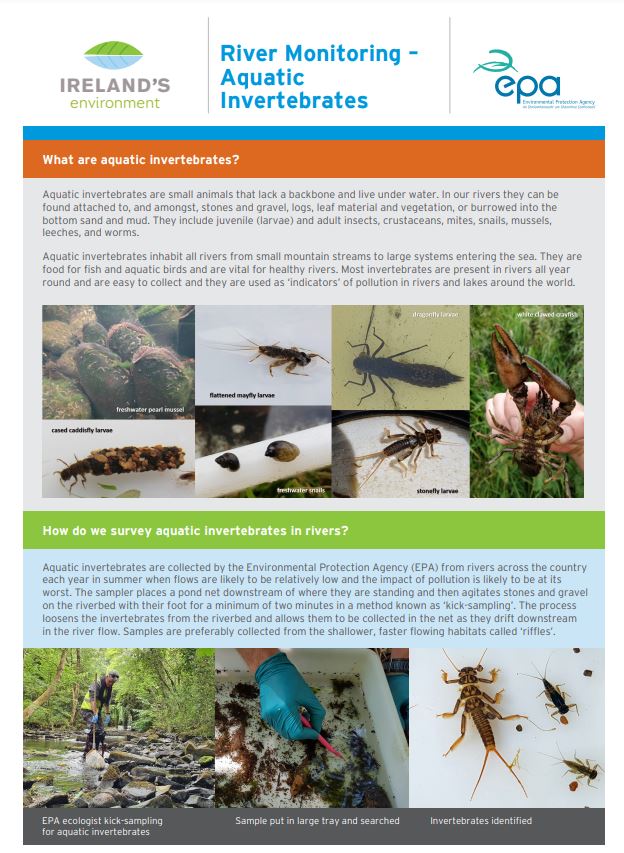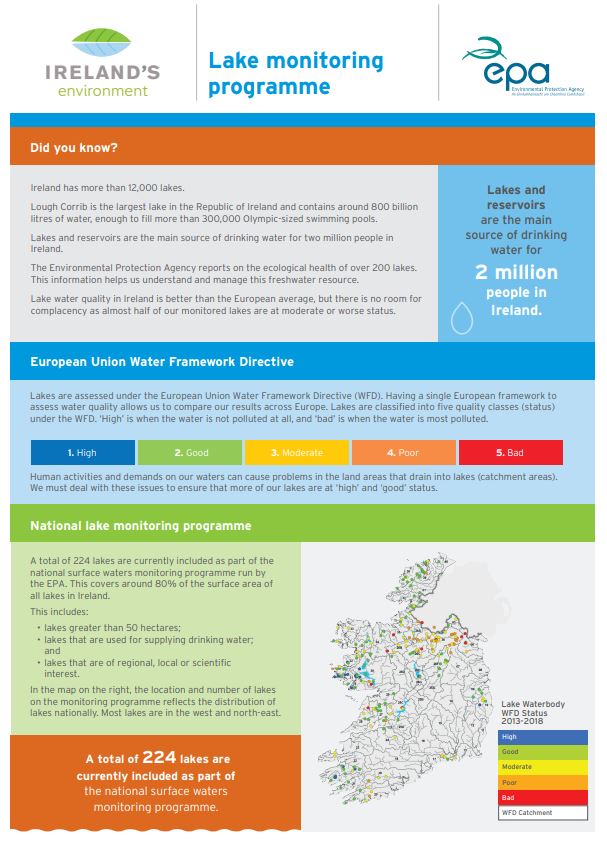Fresh, clean water is vital for all life on earth. Ireland has some of the best water quality and cleanest beaches in Europe. Ireland’s climate means that there is usually enough water to meet the needs of its people and the surrounding environment.
However, overall our water quality in Ireland is getting worse.
Just over half of Ireland’s surface waters are in good condition. There is a relatively small decline in water quality of our rivers and lakes. The number of estuaries and coastal water bodies in satisfactory condition has also decreased.
The main threat to water quality is the presence of too much nutrients, such as phosphorus and nitrogen, which come primarily from agriculture and waste water.
Read more about the EPA’s assessments of water quality and agriculture.
When nutrients such as nitrogen and phosphorus enter our waterways they cause an increase in the growth of plants and algae. This in turn clogs up our water courses, uses up oxygen and harms other aquatic life such as insects and fish.
Nitrates and phosphorous
Nitrate concentrations remain too high in rivers, groundwater, and estuaries in the south east, south west and midlands & eastern regions. Nationally, although there have been year on year fluctuations, average nitrate concentrations have increased since 2012/2013 in all waterbody types.
A quarter of all rivers have phosphorus concentrations which are greater than the good water quality standard. Nutrient losses from agriculture are one of the significant drivers impacting on our water quality.
Read further information on the results of water quality monitoring in 2022, as used to support the assessment of the impact of the nitrate’s derogation on Irish waters.
Find previous water quality assessments of the impact of the nitrate’s derogation on Irish waters, ND Derogation Report 2021 and Nitrogen and Phosphorus Concentrations in Irish Waters (2020).
Read the most recent Article 10 report on implementation of the Nitrates Directive in Ireland. You can also read historic reports, Article 10 report for Ireland 2012-2015 and Article 10 Report for Ireland 2008-2011.
Recent analysis by the EPA indicates the nitrogen reductions needed to meet water quality objectives in river catchments to the south, southeast and east of the country. Currently, the nitrogen loads being delivered to the sea from the upstream river catchments are too high and are causing increased growth of algae and aquatic plants, and this is impacting the aquatic ecosystem health of our estuaries and coastal waters.
The evidence shows that the goal of restoring all waters to good status by 2027 will not be achieved. Our water quality is going in the wrong direction and any improvements we are seeing are being cancelled out by declines occurring elsewhere.
Full implementation of Ireland’s River Basin Management Plan, including targeted action at the local water catchment level, is key to improving water quality.
